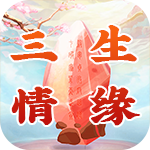1. 英文中有沒有比喻,擬人的修辭手法
英語修辭手法 一、明喻(simile)是以兩種具有相同特征的事物和現象進行對比,表明本體和喻體之間的相似關系,兩者都在對比中出現.常用比喻詞like, as, as if, as though等,例如: 1、This elephant is like a snake as anybody can see. 這頭象和任何人見到的一樣像一條蛇. 2、He looked as if he had just stepped out of my book of fairytales and had passed me like a spirit. 他看上去好像剛從我的童話故事書中走出來,像幽靈一樣從我身旁走過去. 3、It has long leaves that sway in the wind like slim fingers reaching to touch something. 它那長長的葉子在風中擺動,好像伸出纖細的手指去觸摸什麼東西似的. 二、隱喻(metaphor)這種比喻不通過比喻詞進行,而是直接將用事物當作乙事物來描寫,甲乙兩事物之間的聯系和相似之處是暗含的. 1、German guns and German planes rained down bombs, shells and bullets。
德國人的槍炮和飛機將炸彈、炮彈和子彈像暴雨一樣傾瀉下來. 2、The diamond department was the heart and center of the store. 鉆石部是商店的心臟和核心. 三、提喻(synecdoche)又稱舉隅法,主要特點是局部代表全體,或以全體喻指部分,或以抽象代具體,或以具體代抽象.例如: 1、The Great Wall was made not only of stones and earth, but of the flesh and blood of millions of men. 長城不僅是用石頭和土建造的,而且是用幾百萬人的血和肉建成的. 句中的“the flesh and blood”喻為“the great sacrifice”(巨大的犧牲) 2、“。saying that it was the most beautiful tongue in the world,。”
……他說這是世界上最美的語言. 這里用具體的“tongue”代替抽象的“language”. 4、Many eyes turned to a tall,20—year black girl on the U.S. team. 很多人將眼光投向美國隊一個高高的20歲的黑姑娘. 這里的“many eyes”代替了“many persons”. 四、擬人(personification)這種修辭方法是把人類的特點、特性加于外界事物之上,使之人格化,以物擬人,以達到彼此交融,合二為一. 1、She may have tens of thousand of babies in one summer.(From“ Watching Ants”) 一個夏天她可能生育成千上萬個孩子. 這里用“she”和“babies”把蜜蜂比作人類婦女的生育. 2、My only worry was that January would find me hunting for a job again. 我唯一擔心的是,到了一月份我又得去找工作. 英語里常把“年”“月”“日”人格化,賦以生命,使人們讀起來親切生動. 五、夸張(hyperbole)這是運用豐富的想象,過激的言詞,渲染和裝飾客觀事物,以達到強調的效果. 1、My blood froze. 我的血液都凝固了. 2、When I told our father about this,his heart burst. 當我將這件事告訴我們的父親時,他的心幾乎要迸出來. 3、My heart almost stopped beating when I heard my daughter'svoice on the phone. 從電話里一聽到我女兒的聲音,我的心幾乎停止跳動. 六、疊言(rhetorical repetition)這種修辭法是指在特定的語境中,將相同的結構,相同意義詞組成句子重疊使用,以增強語氣和力量. 1、It must be created by the blood and the work of all of us who believe in the future, who believe in man and his glorious man—made destiny. 它必須用我們這些對于未來,對于人類以及人類自己創造的偉大命運具有信心的人的鮮血和汗水去創造. 2、。 Because good technique in medicine and surgery means more quickly—cured patients, less pain, less discomfort, less death, less disease and less deformity. 因為優良的醫療技術和外科手術意味著更快地治療病人,更少痛苦,更少不安,更少死亡,更少疾病,和更少殘廢. 七、借代(metonymy)是指兩種不同事物并不相似,但又密不可分,因而常用其中一種事物名稱代替另一種. 1、Several years later, word came that Napoleonyh himself was coming to inspect them。
幾年以后,他們聽說拿破侖要親自來視察他們. “word”在這里代替了“news, information”(消息、信息) 2、Al spoke with his eyes,“yes”. 艾爾用眼睛說,“是的”. “說”應該是嘴的功能,這里實際上是用眼神表達了“說話的意思”. 八、雙關語(pun)是以一個詞或詞組,用巧妙的辦法同時把互不關聯的兩種含義結合起來,以取得一種詼諧有趣的效果. Napoleon was astonished.”Either you are mad, or I am,”he declared. “Both,sir!”cried the Swede proudly. “Both”一詞一語雙關,既指拿破侖和這位士兵都是瘋子,又指這位戰士參加過拿破侖指揮的兩次戰役. 九、擬聲(onomatcpocia)是摹仿自然界中非語言的聲音,其發音和所描寫的事物的聲音很相似,使語言顯得生動,富有表現力. 1、On the root of the school house some pigeons were softly cooing. 在學校房屋的屋頂上一些鴿子正輕輕地咕咕叫著. 2、She brought me into touch with everything that could be reached or felt——sunlight, the rustling of silk, the noises of insects, the creaking of a door, the voice of a loved one. 她使我接觸到所有夠得著的或者感覺得到的東西,如陽光呀,絲綢擺動時的沙沙聲呀,昆蟲的叫聲呀,開門的吱嗄聲呀,親人的說話聲呀. 十、。
2. 夸張、比喻、擬人的句子各五句
1、荷葉挨挨擠擠的,像一個個碧綠的大圓盤。
2、水泡閃亮閃亮的,射出紅的光,黃的光,綠的光,紫的光……多像一串串彩色的珍珠啊!
3、翠鳥頭上的羽毛像橄欖色的頭巾,繡滿了翠綠色的花紋;背上的羽毛像淺綠色的外衣;腹部的羽毛像赤褐色的襯衫。
4、它是那麼粗壯、結實、挺拔,就像草原的哨兵一樣。
5、停著的燕子成了音符,譜成了一支正待演奏的春天的贊歌。
6、白荷花在這些圓盤之間冒出來。有的才展開兩三片花瓣兒。有的花瓣兒全展開了,露出嫩黃色的小蓮蓬。有的還是花骨朵兒,看起來飽脹得馬上要破裂似的。
3. 誰會寫英語的關于朋友的排比,比喻,擬人的句子 幫忙寫幾句 謝謝
排比:Afriend is someone who changes your life just by being part of it,is
someone who makes you laugh until you can\'t stop ,is
someone who makes you believe that there really is good in the world,is
someone who convinces you that there really is an unlocked door just waiting for you to open it.
他只是你生活中的一部分內容,卻能改變你整個的生活。
他會把你逗得開懷大笑; 他會讓你相信人間有真情.
他會讓你確信,真的有一扇不加鎖的門,在等待著你去開啟。
比喻:
Friends are like fiddle-strings, they must not be screwed too tight. 朋友像琴弦,不能太擰緊。
朋友本身就是人了,不能在擬人了吧?
就這些了,希望能幫到你。
4. 比喻句、擬人句、夸張句
1、風兒清唱著歌,喚醒了沉睡中的大地。
2、頑皮的雨滴最愛在雨傘上盡情的跳舞。
3、船頭飛濺起的浪花,吟唱著歡樂的歌兒。
4、秋天到了,樹上金紅的果子露出了笑臉,她在向著我們點頭微笑。
5、海棠果搖動著它那圓圓的小臉,沖著你點頭
微笑。
6、那點薄雪好像忽然害了羞,微微露出點粉色。
7、一個個紅石榴就像一個個小姑娘可愛的笑臉,躲在樹枝間。
8、樹縫里也漏著一兩點路燈光,沒精打彩的,是渴睡人的眼。
9、巨浪伸出雙臂把我猛地托起。
10、收音機天天說個不停,令鄰居十分討厭!!!!!!
11、油蛉在這里低唱,蟋蟋們在這里彈琴。
12、春尚淺,幾處山頂上的梅花卻掙扎著吐出紅苞來。
13、微風柔和地吹, 柔和地愛撫我的面孔。
14、荷塘里的荷花都羞澀地打著朵。
15、落葉隨著風高低起舞。
16、我沐浴在大自然的懷抱中,讓柔和的晚風輕撫著鬢角,吹去一切郁悶和煩惱。
17、陽春三月,沉睡了一冬的銀梨樹被蒙蒙細雨淋醒。
18、它脫下破舊的外衣,又開始新的生活;它貪婪地吮吸著春天那清新、甜潤的露珠兒,慢慢地長出逗人喜愛的嫩枝綠葉。
1) 父愛如山,母愛如海。 2) 皎潔的明月高掛在淡藍色的天空中,月光像流水一樣瀉下來,大地一片銀白色。 3) 月亮慢慢地從江心升起來了,圓圓的、亮晶晶的,好像一個銀盤。 4) 春風像一支彩筆,把整個世界勾勒得更加絢麗多彩。 5) 春風像個慈祥的母親,拂著你的臉頰,使你感到舒暢,心曠神怡。 6) 云彩像一朵朵潔白的羽毛,輕輕的飄浮在空中。 7) 東方天邊的彩霞時刻在變幻,如霜楓,如榴火,如瑪瑙,如琥珀。 8) 西湖像一塊碧玉,也像一面銅鏡。 9) 星星像一雙明亮的眼睛在夜空中照耀。 10) 小姑娘的心靈像棉花一樣純潔。 11) 水仙花很漂亮,像一位站在小河邊,穿著白衣服的仙女。 12) 春天像位愛美的姑娘,讓世界姹紫嫣紅。
5. 英語25個修辭手法以及例句 急
英語修辭手法1) Simile:(明喻)It is a figure of speech which makes a comparison between two unlike elements having at least one quality or characteristic (特性)in common. To make the comparison, words like as, as。
as, as if and like are used to transfer the quality we associate with one to the other. For example, As cold waters to a thirsty soul, so is good news from a far country./ This elephant is like a snake as anybody can see. 2) Metaphor:(暗喻)It is like a simile, also makes a comparison between two unlike elements, but unlike a simile, this comparison is implied rather than stated. For example, the world is a stage./ The diamond department was the heart and center of the store. 3) Analogy: (類比)It is also a form of comparison, but unlike simile or metaphor which usually uses comparison on one point of resemblance, analogy draws a parallel between two unlike things that have several common qualities or points of resemblance.4) Personification: (擬人)It gives human form of feelings to animals, or life and personal attributes(賦予) to inanimate(無生命的) objects, or to ideas and abstractions(抽象). For example, the wind whistled through the trees.5) Hyperbole: (夸張) It is the deliberate use of overstatement or exaggeration to achieve emphasis. For instance, he almost died laughing.6) Understatement: (含蓄陳述) It is the opposite of hyperbole, or overstatement. It achieves its effect of emphasizing a fact by deliberately(故意地) understating it, impressing the listener or the reader more by what is merely implied or left unsaid than by bare statement. For instance, It is no laughing matter.7) Euphemism: (委婉)It is the substitution of an agreeable or inoffensive(無冒犯) expression for one that may offend or suggest something unpleasant. For instance, we refer to "die" as” pass away".8) Metonymy (轉喻) It is a figure of speech that has to do with the substitution of the mane of one thing for that of another. For instance, the pen (words) is mightier than the sword (forces). 借代(metonymy)是指兩種不同事物并不相似,但又密不可分,因而常用其中一種事物名稱代替另一種。 1、Several years later, word came that Napoleonyh himself was coming to inspect them。
幾年以后,他們聽說拿破侖要親自來視察他們。 “word”在這里代替了“news, information”(消息、信息) 2、Al spoke with his eyes,“yes”. 艾爾用眼睛說,“是的”。
“說”應該是嘴的功能,這里實際上是用眼神表達了“說話的意思”。9) Synecdoche (提喻) It is involves the substitution of the part for the whole, or the whole for the part. For instance, they say there's bread and work for all. She was dressed in silks.10) Antonomasia (換喻)It has also to do with substitution. It is not often mentioned now, though it is still in frequent use. For example, Solomon for a wise man. Daniel for a wise and fair judge. Judas for a traitor.11) Pun: (雙關語) It is a play on words, or rather a play on the form and meaning of words. For instance, a cannon-ball took off his legs, so he laid down his arms. (Here "arms" has two meanings: a person's body; weapons carried by a soldier.)/ Napoleon was astonished.”Either you are mad, or I am,”he declared. “Both,sir!”cried the Swede proudly. “Both”一詞一語雙關,既指拿破侖和這位士兵都是瘋子,又指這位戰士參加過拿破侖指揮的兩次戰役12) Syllepsis: (一語雙敘) It has two connotations. In the first case, it is a figure by which a word, or a particular form or inflection of a word, refers to two or more words in the same sentence, while properly applying to or agreeing with only on of them in grammar or syntax(句法). For example, He addressed you and me, and desired us to follow him. (Here us is used to refer to you and me.) In the second case, it a word may refer to two or more words in the same sentence. For example, while he was fighting , and losing limb and mind, and dying, others stayed behind to pursue education and career. (Here to losing one's limbs in literal; to lose one's mind is figurative, and means to go mad.)13) Zeugma: (軛式搭配) It is a single word which is made to modify or to govern two or more words in the same sentence, wither properly applying in sense to only one of them, or applying to them in different senses. For example, The sun shall not burn you by day, nor the moon by night. (Here noon is not strong enough to burn)14) Irony: (反語) It is a figure of speech that achieves emphasis by saying the opposite of what is meant, the intended meaning of the words being the opposite of their usual sense. For instance, we are lucky, what you said makes me feel real 。

















